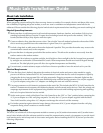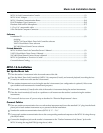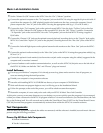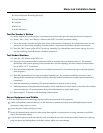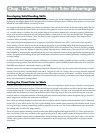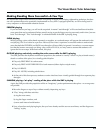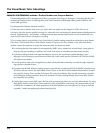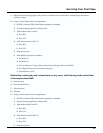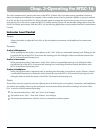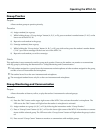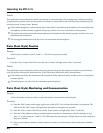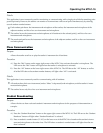
Surviving Your First Class
16
The Class
Make certain you have the following materials conveniently located.
A) Printed materials: teacher’s books and disks, and all relevant handouts
B) Verify that students have all their materials
1) Text with interactive disks
2) V-MT1
3) Additional SMFs/Books per syllabus
Talking to the class:
To survive the first round of teacher-class communication, press ALL and the Microphone button; now the student can
hear both your instrument and your voice. If this is your first class, and you find yourself inching toward panic mode,
press MUTE. This will silence all student instruments and voice communication. For more detailed description of the
communication options, see either the 11” X 17” (folded in half) “Survivor’s Guide” or the next section of this manual.
Playing your first SMF:
The following options are the easiest to get started, and this assumes that a number of student eyes are watching you
intently.
A) Insert the SMF disk for your text into the disk drive of the digital piano, select the song, adjust the tempo and
PLAY. Merely hearing the music will focus student attention on the music. OR
B) Insert the SMF disk into the disk drive of the computer, open the MTLC-16 software and then click on “Visual
Music Tutor” in the menu bar, and navigate the File menu until you select the desired song. Now, press the
SPACE BAR. The music begins and students can concentrate on the music being learned.
Interactive models for successful learning:
Establishing an interactive routine that uses SMF recordings, reinforced with visual cues, will help improve student
progress.
Basics
A) Listen to song—ALL tracks on
B) Listen to song a slower tempo—MUTE Tracks R, 1, & 2, so only Tr. 3 & 4 are playing
1) Hands separately
2) Hands together
Shadow Play—“air play” or mentally read through the piece while the SMF plays
A) Moving fingers on top of keys without actually depressing any keys
B) Other non-playing activities to mentally play the piece:
1) sing notes names
2) sing finger numbers
3) naming intervals and direction



